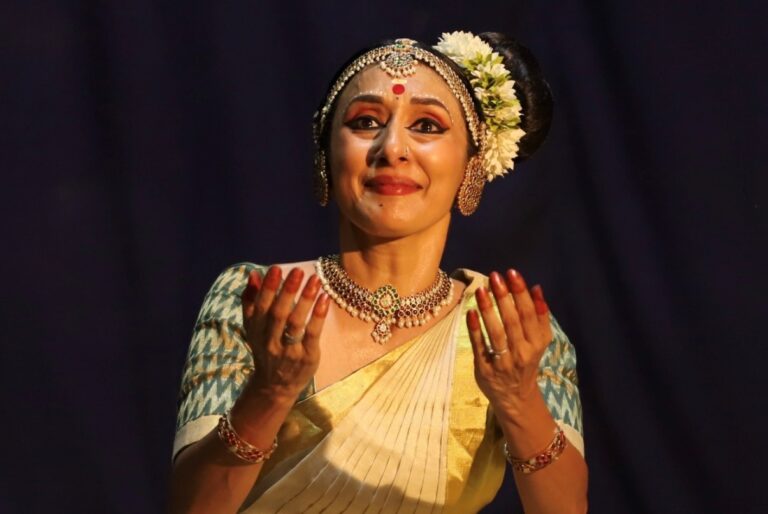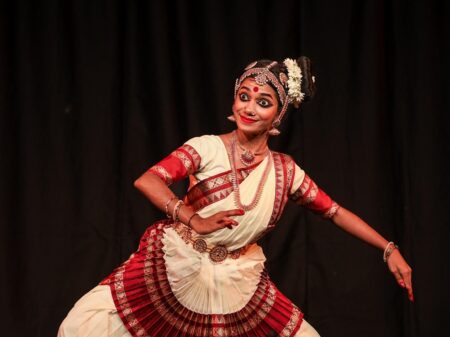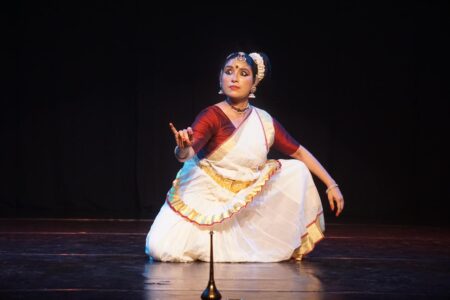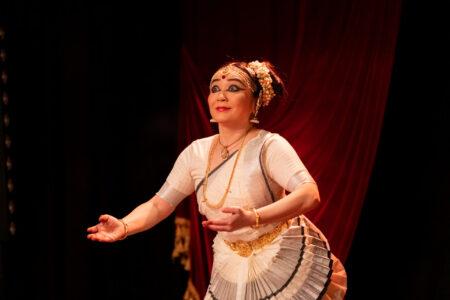This article delves into the nuanced choreography of Thillana and Shlokam.
In this series, we have explored the choreographies of the Mohiniyattam repertoire: Cholkettu, Jathiswaram, Varnam, and Padam. Here, we will look at how to choreograph Thillana and Shlokam.
Thillana
Thillana is considered to express happiness and is connected to Anandamaya kosham. After the abhinaya-oriented Padams, Thillana, which is mostly pure dance, is performed. It consists of aṭavus involving intricate footwork, stylized body movements, and sculpturesque poses, all in tune with rhythmic vayttaris.

Thillanas are performed in quick tempo, in contrast to Padams. Towards the close of a Thillana performance, the last line or two of the text is acted out with hastamudras and appropriate body movements.
One of the most unique techniques of the Thillana is the incorporation of mythic complexities like Panchanada and Muthaayippu. In the choreography of the Thillana, these aspects are of primary concern to achieve a compelling performance.
Shlokam
Shlokam manifests a meditative state of mind, transcending worldly existence. In this state, the mind exists in temporary bliss. The mind is of utmost importance in Shlokam. In other items like Cholkkettu and Jathiswaram, the manifestation of the body through Nritha gets primary attention. However, in Shlokam, the body and Nritha take a back seat, and the mind and its articulation through Abhinaya become more important.
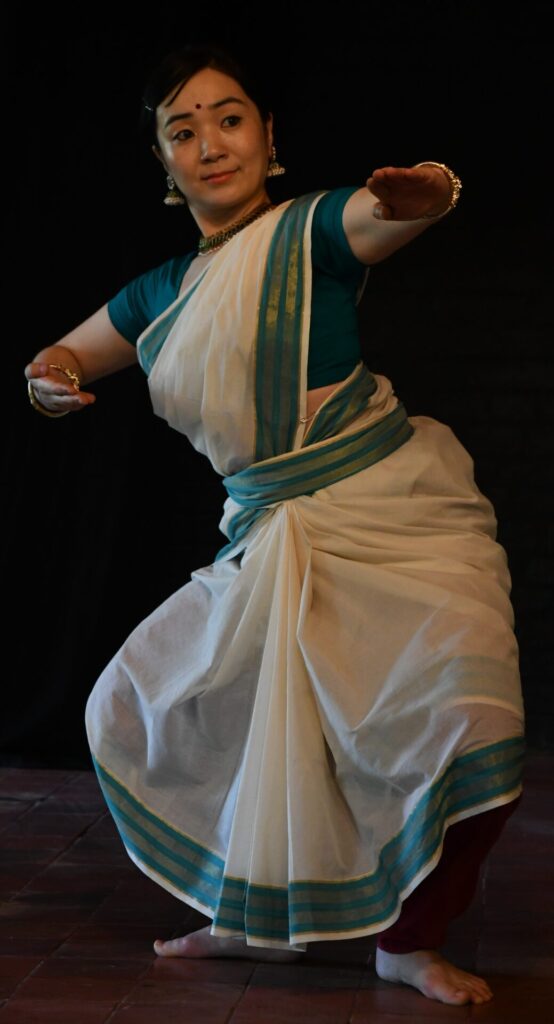
Talam, or rhythm, which is critical in items like Cholkkettu, becomes less important in Shlokam. The ‘laya’ of the mind defines the choreography. Laya here is not just the tempo of the dance but represents the union of the dancer’s soul with the Paramatma. This union is achieved through bhakti.
The dancer pursues his/her ishtadevata, or favorite deity, to achieve this union. An unconditional surrender to this deity ultimately leads to a complete union with the boundless spirit, where God and the dancer no longer exist in separation. This metaphysical concept is often referred to in Puranas as the union of Siva and Shakti or Purusha and Prakrithi.
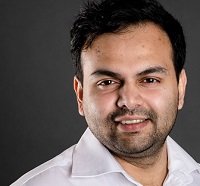
Photo Courtesy: Natanakairali Archives

